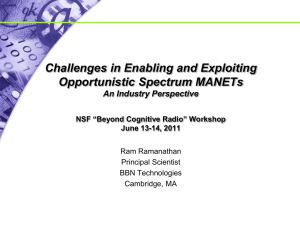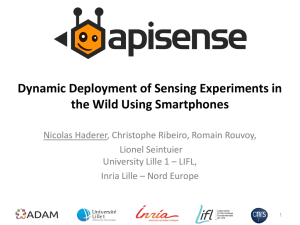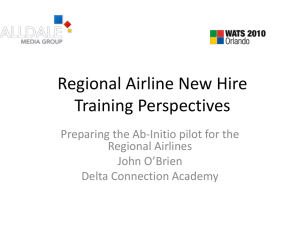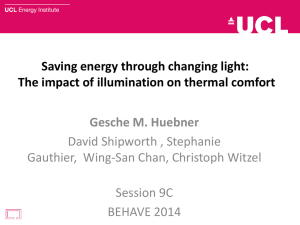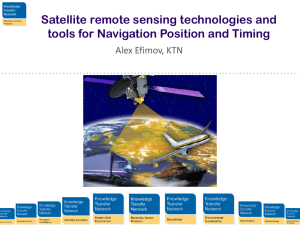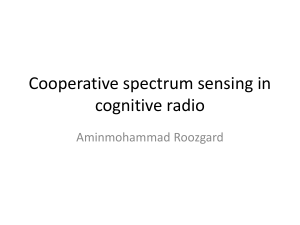ppt
advertisement
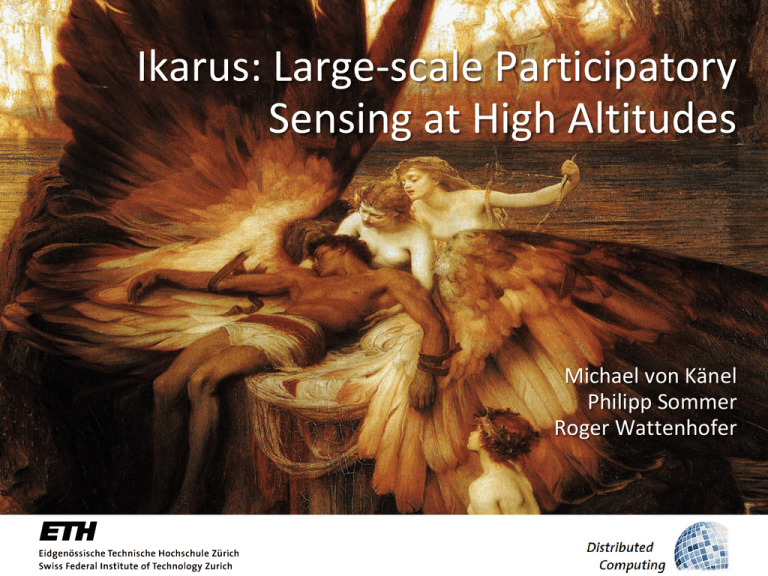
Ikarus: Large-scale Participatory Sensing at High Altitudes Michael von Känel Philipp Sommer Roger Wattenhofer Mobile Phones Over 5 billion mobile phones worldwide (72.6% of world population) Smartphones account for 19% of sales in 2010 Phones as a Platform for Mobile Sensing Smartphones have already many integrated sensors: Camera Microphone GPS Compass Accelerometers Gyroscope Proximity sensor Near-field communication People-centric Sensing Applications Sense your environment: Air quality/pollution Traffic congestion Identify patterns in your behavior: Heart rate/stress level Personal fitness From Sensor Networks to Participatory Sensing Collection and analysis of sensor measurements Wireless Sensor Network Participatory Sensing The Participatory Sensing Loop How can participatory sensing be sucessful? 2. 1. 3. We identify three key challenges: 1. Incentives for participation 2. Ability to deal with faulty data 3. Concise data representation Related Work: Mobile Sensing Projects Most former projects are only small scale CenceMe Biketastic 12 users 22 users BikeNet 5 users The Ikarus System Goal: Use GPS flight records from paraglider pilots to generate maps of thermal active areas (hotspots) Data provided by 2,331 unique users in Switzerland (2003-2009) 30,000 flight tracks analyzed, several GByte of data processed A Short Introduction to Paragliding Recreational flying sport Flying... Launching... ... and Landing A Short Introduction to Paragliding (2) Cloud Base Thermal band Breakoff point Example: Paraglider Flight Ikarus: System Architecture Sensing Flights Flight navigation devices used by paraglider pilots Records time, GPS position Accurate height measured by barometric pressure Variometer reports climb rate Data Integrity Tracks are signed by the device Cheating is very hard! Participation Incentives How can we make pilots to share their recorded tracks? Pilots share recorded flights on community websites Tell friends about their flights (social networks) Paragliding contests Credits awarded for distance or shape of the track (triangle) Data Processing: Finding Thermal Columns Philipp Sommer, ETH Zurich @ HotMobile‘11 15 Data Quality Hardware challenges of participatory sensing: Sensor device is owned by the user Different hardware Bad calibration (time, altitude) Only 81.1% of all tracks could be used Data Quality: Example Pilot forgot to calibrate alititude before launch Problem: Flight Distribution Flight tracks are distributed very unequally Goms Valley, Switzerland, all flights from 2003-2010, 80 x 50 km Solution: Probability based Thermal Maps Assign an uncertainty value to each thermal trigger point Closing the Loop Feedback to users is crucial in participatory sensing Increase awareness for data quality (calibration) Encourage pilots to upload their flights Feedback to pilots: Thermal maps Thermal maps for flight preparation Google Maps Website: http://thermik.kk7.ch Google Earth Feedback to pilots: Hotspots Import thermal hotspots on the flight navigation device XML file with coordinates of strong thermal uplift Recommendation system during flights Find good thermals in your area Explore new areas Future devices will likely include 3G connectivity Get live feedback from other pilots? Evaluation: Ikarus vs. TherMap Comparison with a physical simulation of thermal uplift Conclusions ● Ikarus: Large scale participatory sensing with 2331 users ● First thermal maps based on GPS flight logs


